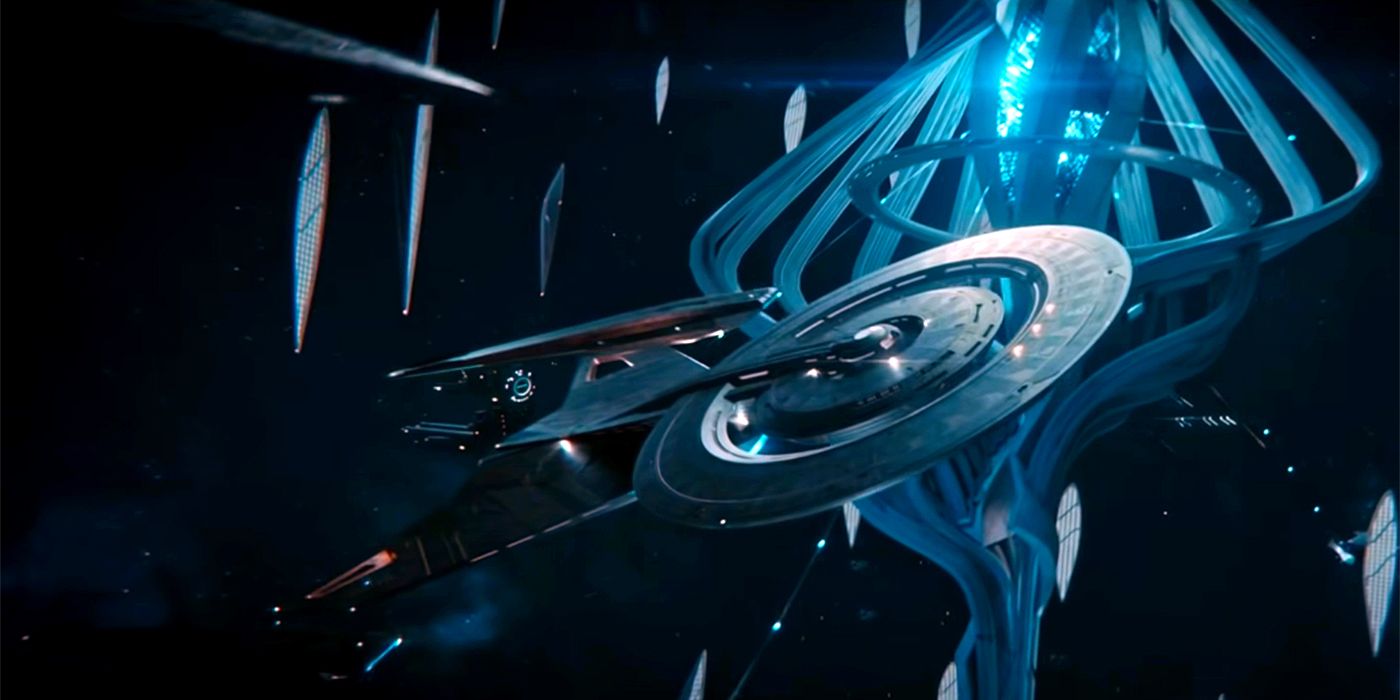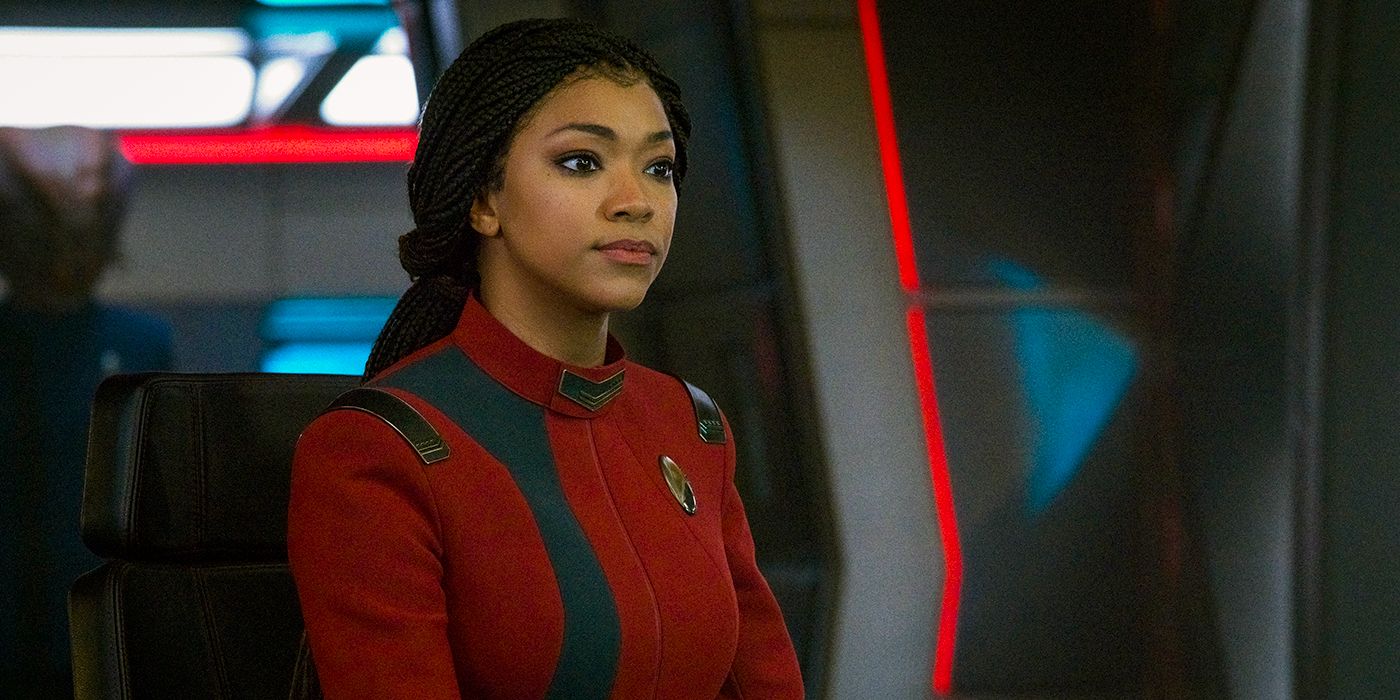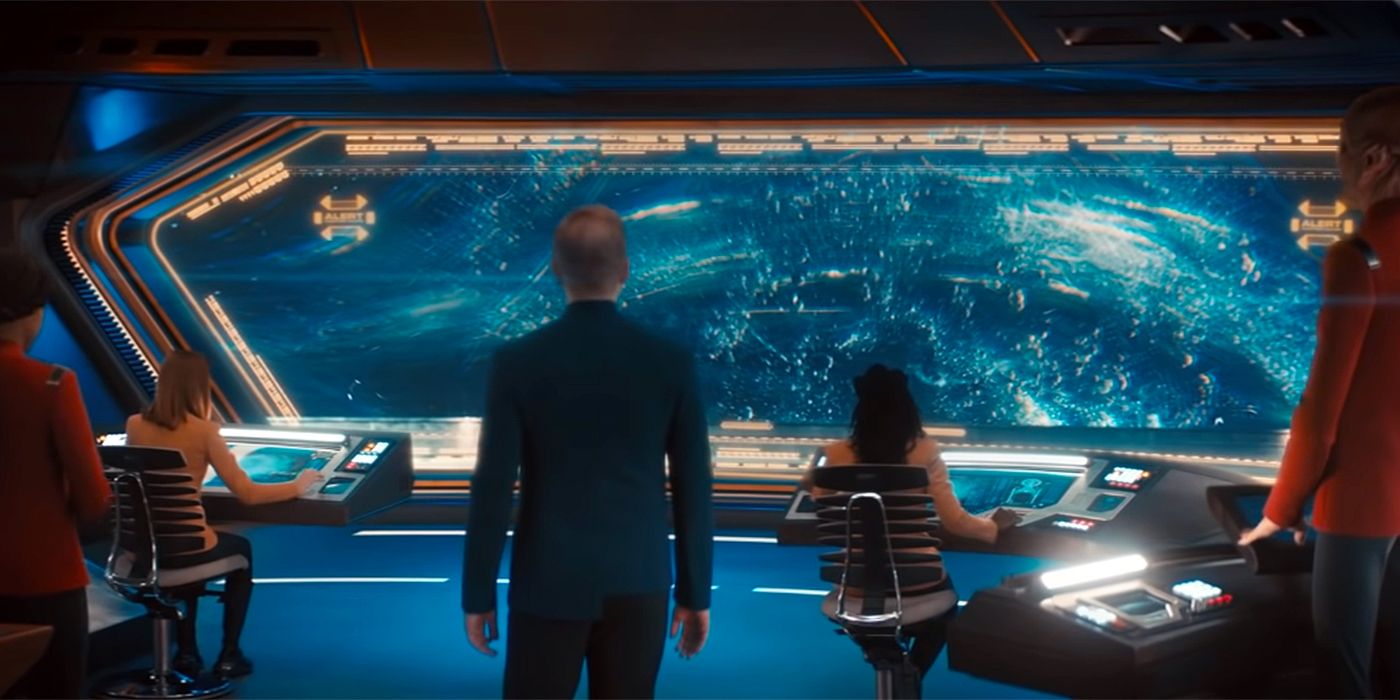WARNING: The following contains spoilers for Star Trek: Discovery Season 4, Episode 5, "The Examples," streaming now on Paramount+.
While the USS Discovery is the oldest ship in Starfleet's 32nd century armada, having transported itself over 900 years into the future at the end of Star Trek: Discovery Season 2, it also is one of the most advanced and unique, especially after being retrofitted with 32nd century technology. From boasting the Spore Drive -- allowing the starship to jump through the spatial slipstream in the blink of an eye -- to reviving long-lost tech to create synthetic bodies, the Discovery can more than hold its own with other vessels in this far-future. However, a recent development suggests that the Discovery has become even more advanced as its ship computer takes another major step towards attaining full sentience.
As the Discovery departs from a recent rescue mission, evacuating refugees from a solar system threatened by the all-consuming gravitational anomaly that has been rampaging erratically across the galaxy since the start of Discovery Season 4, the ship's computer -- which has taken on a female-gendered personality named Zora -- senses Captain Michael Burnham's emotions are in turmoil. A surprised Burnham questions how Zora had become so empathetic, with Zora also uncertain on the circumstances behind her own evolution regarding human emotion and intuition, leaving open the distinct possibility that Zora is steadily progressing towards becoming a full member of the Discovery crew.
Zora's evolution from the detached, emotionless starship computer began in Discovery Season 2 as the ship encountered an ancient lifeform simply known as the Sphere in the 23rd century. Containing hundreds of thousands of years of galactic data in its cosmic material, the Discovery absorbed the Sphere and its wealth of data for Starfleet's subsequent research. This, however, led the artificial intelligence program Control to go rogue and nearly wipe out all organic life in the galaxy before it was destroyed. Deciding that the possibility of another malevolent A.I. resurfacing was too great a risk, the Discovery traveled ahead nine centuries while the Sphere began to bond to the Discovery's ship computer and create the Zora persona.
Unlike Control, Zora appears to be a burgeoning artificial intelligence that works in service to its human associates and has grown to empathize with them, consoling Burnham when she senses that Burnham is troubled by being unable to save a refugee from the anomaly. The crew of the Discovery has more pressing concerns to address before the realization that Zora is becoming more human, including the revelation that the anomaly was artificially created rather than being a naturally occurring phenomenon, but Zora's evolution may become key in the starship saving Starfleet from the immense, cosmic threat it has been facing since the beginning of Season 4.
The starship computer has a been a vocal presence in Star Trek ever since Majel Barrett voiced the USS Enterprise's computer throughout Star Trek: The Original Series and Star Trek: The Next Generation. And while ship programs have certainly developed personalities of their own on various Star Trek series before -- including the Emergency Medical Hologram on Star Trek: Voyager to multiple rogue Holodeck programs -- Star Trek: Discovery takes this trope to the next level in Zora, with the feeling that Zora's evolution is only just beginning to take shape.
Developed for television by Bryan Fuller and Alex Kurtzman, new episodes of Star Trek: Discovery Season 4 are released Thursdays on Paramount+.



